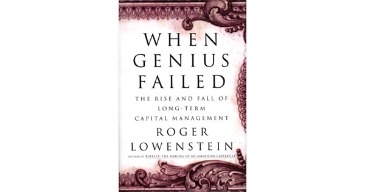Contents

In addition to a potential trend reversal, hammers can mark bottoms or support levels. The low of the long lower shadow implies that sellers drove prices lower during the session. However, the strong finish indicates that buyers regained their footing to end the session on a strong note. While this may seem like enough to act on, hammers require further bullish confirmation. Further buying pressure, and preferably on expanding volume, is needed before acting.

- Since intraday periods can be quite short , the price change during the period can be small, which can lead to flat looking price lines.
- Do never try to trade a candlestick pattern all by itself, but use it as inspiration, and try to come up with your own trading strategy.
- The preceding candlesticks should be at least three consecutive green candles leading up the dark cloud cover candlestick.
- If buyers are stronger, the candlesticks will be ‘bullish’, and if sellers are stronger, the candlesticks will be ‘bearish’.
Candlestick charts are more visual, due to the color coding of the price bars and thicker real bodies, which are better at highlighting the difference between the open and the close. However, while Candlestick charts make it much easier to interpret price action, it lacks the smoothness of the line chart, especially, when the market opens with a large gap. Hence, professional traders often end up using a short time period moving average to get the “feel” of a smooth trend, or lack of trend, in the market.
thoughts on “How To Read Candlestick Chart For Day Trading”
However, some charting tools will use black and white instead of red and green, with hollow candlesticks representing up movements and solid representing down. The first pair, Hammer and Hanging Man, consists of identical candlesticks with small bodies and long lower shadows. The second pair, Shooting Star and Inverted Hammer, also contains identical candlesticks, but with small bodies and long upper shadows.

However, on this instance, the https://en.forexbrokerslist.site/ was already trading in a range for several days. As you may know, when the market consolidates for a while, it is basically setting up to breakout in one direction or the other. The formation of this bullish Candlestick pattern provided a signal as to of which way the market was about to break.
Charts are based on various data sources, which may include market data and other information provided by third party information providers. A bullish candlestick with a relatively wide price range and a wide body closing close to its highs. This is what allows you to view Forex price data with greater or lesser detail over various time frames. It also allows you to see the hidden signals in the market that may occur over a sequence of candlesticks instead of just one.
Candlestick charts can be divided into single, double, and triple candlestick patterns, with each pattern representing different market trends. The benefit of candlestick charts is that they can be read at a glance because they provide a simple representation of price history. Each candlestick on the graph represents the same timeframe, which could include any length of time, from seconds to decades. Candlestick charts give an advantage over bar charts as they are more visual.
Fast, Dynamic Stock Charts w/ StockMarketEye
So far, we have discussed what is sometimes referred to as the Japanese candlestick chart. While candlesticks are useful in giving you a general idea of price action, they may not provide all you need for a comprehensive analysis. For instance, candlesticks don’t show in detail what happened in the interval between the open and close, only the distance between the two points . Some chartists prefer to use black-and-white representations.
Each green candle is clearly showing that the buyers are taking the price higher. A spinning top at the top of an uptrend could indicate a potential trend reversal. If there is a spinning top after a continuous uptrend and the candle after the spinning top is a red candle, it may be a sign of trend reversal. A spinning top at the bottom of a downtrend could indicate a potential trend reversal. If there is a spinning top after a continuous downtrend and the candle after the spinning top is a green candle, it may be a sign of trend reversal.
Since these forces on the price are roughly equal, it is very likely that the previous trend will end. This situation could bring about a market reversal, which is a price move contrary to the preceding trend. A doji is a trading session where a security’s open and close prices are virtually equal. For example, a down candle is often shaded red instead of black, and up candles are often shaded green instead of white.
The Three White Soldiers is considered a significant sign that a downtrend has ended. A Bullish Harami Cross appears at the bottom of a downtrend and it can suggest that an uptrend is on the verge. This pattern is rare and only appears in extremely volatile trading environments. It is very simple and appears when the price of an instrument has risen exponentially. An inverted hammer pattern is the exact opposite of the hammer pattern. In this case, sellers where stronger, but buyers where still active.
The Size of the Pattern Relative to Other Candlesticks
This group of candlestick patterns indicates that the current price swing — a bearish swing — has lost momentum, and that the price may be about to change direction to the upside. In other words, the price has been going down before any of the bullish reversal patterns show up. Bullish CandlestickA candlestick is said to be bullish if the close price is higher than the open price. As a trader, you can choose any color you want to represent a bullish candlestick, but white or greenis normally used to indicate a bullish direction. The upper wick lies between the period’s high and close price while the lower wick lies between the period’s low and open price.
A red marubozu at the top of an uptrend may indicate a possible downturn reversal. If it appears during a downtrend, it indicates a continuation of the downtrend. It indicates that the buyers tried to push the prices upwards, but could not do so because of the sellers’ strength. It indicates that the sellers tried to push the prices lower, but could not do so because of the buyers’ strength. The red and green versions of the Candlestick and OHLC chart styles convey extra meaning through the colors. This same meaning is also visible in the monochrome version of these chart styles, but some investors find the green and red versions help them to interpret the meaning faster.

Professional https://topforexnews.org/ wait for this confirmation because they understand the concept of order flow and self-fulfilling prophecy. “Low” is the lowest trading price of the asset during that time period. I am going to use these charts for Intraday Trading as I am going to open my account with Upstox. In a consolidation phase, neither the buyers or sellers are in control. The gravestone doji at the top of an uptrend could mean that the price may weaken in the near term. A spinning top shows indecision and might be a neutral candlestick indicating a pause in the trend or a continuation.
Each interval https://forex-trend.net/ts on the hour, every hour for as long as the market is open. It is the reverse of a dragonfly and symbolises a rejection of higher prices. It has the same shape as an inverted hammer, but its location is different. With long wicks and small bodies may suggest that the current trend is about to come to an end and a new trend will begin. I’m a technical writer and marketer who has been in crypto since 2017.
White Marubozu
If it has no body, it means the open and close prices are the same. There are no certainties when trading, and analysing candlestick patterns are just one tool that a trader can use to make trading decisions. The time frames that you will use to analyse the candlestick chart and to determine these will depending on your trading style and investment objectives. I have explained in more detail about the different types of trading stylesand the most common time frames used for each in another article. This is why some traders find it useful to use both traditional Japanese candlestick charts and Heikin-Ashi, to get a more overall, well-rounded view of the markets. They give you the most information in an easy-to-navigate format.
The volume of transactions that occurs in shorter sessions cannot be compared to those of longer trading sessions. When you compare the size of the candlesticks in the pattern to the other candlesticks around, you can gauge the level of conviction of the traders behind the move. It tells you the strength of the dominating party — bulls or bears. Later on, in 1991, he wrote a book about this new charting method he learned from Japan and titled it, “Japanese Candlestick Charting Techniques”. If you’re serious about learning how to use candlestick charts, you owe it to yourself to do it the right way.
Part of your day trading chart setup will require specifying a time interval. If you are not planning to be glued to your screen all day, you will probably want to use a lower time frame. If you plan to be there for the long haul, perhaps a higher time frame would better suit you. However, it stops around the close of the previous bar which has now been turned into a resistance level. Yet, the bear pressure is still strong and will most likely push the price past the resistance level.
Bar charts effectively extend line charts, adding the open, high, low, and close. They remain relatively straightforward to read while giving you some crucial information line charts fail to do. After the first down candle, bulls try to push the price upwards, and the second candle opens with a gap. In this chart, you can see a tweezer top pattern formed at the resistance level.
You may find lagging indicators work the best with less volatility, such as moving averages. You might then benefit from a longer period moving average on your daily chart than if you used the same setup on a 1-minute chart. The most common way of using candlesticks is to form candlestick patterns that give you some clues about where the price is heading next.
This is not so much a pattern to act on, but it could be one to watch. If the price continues higher afterward, all may still be well with the uptrend, but a down candle following this pattern indicates a further slide. Candlesticks show that emotion by visually representing the size of price moves with different colors. Traders use the candlesticks to make trading decisions based on regularly occurring patterns that help forecast the short-term direction of the price. For example, by using oscillating technical indicators, a trader will first wait for a signal that the market has moved into an overbought or oversold condition. At that point, they would look for a reversal signal of the prevailing trend.
Triple Candlestick Patterns
It shows an accurate depiction of volatility based on the actual price of the instrument. This gives you no choice but to assess each security individually, ensuring precise decisions are made. The best thing to do is to test all patterns and find out which one is the best. The Bullish Hakkake relies on a sort of breakout logic, where the breakout level becomes the high of the inside bar. Here, an evening star formed at the top of the right shoulder. Of course, such an insight could impact your analysis of the market.
Consider a Renko if you are looking to ease yourself into day trading with charts. Importantly, each chart has its benefits and drawbacks and there are many variations, like points and figures. Day trading using candlestick and bar charts is particularly popular as they provide more information than a simple line chart. Our research indicates there are at least 80 candlestick patterns that have a formal name. The dragonfly is a type of doji candlestick where the open, high, and close prices of the session are at the same level, but the session traded lower at some point.